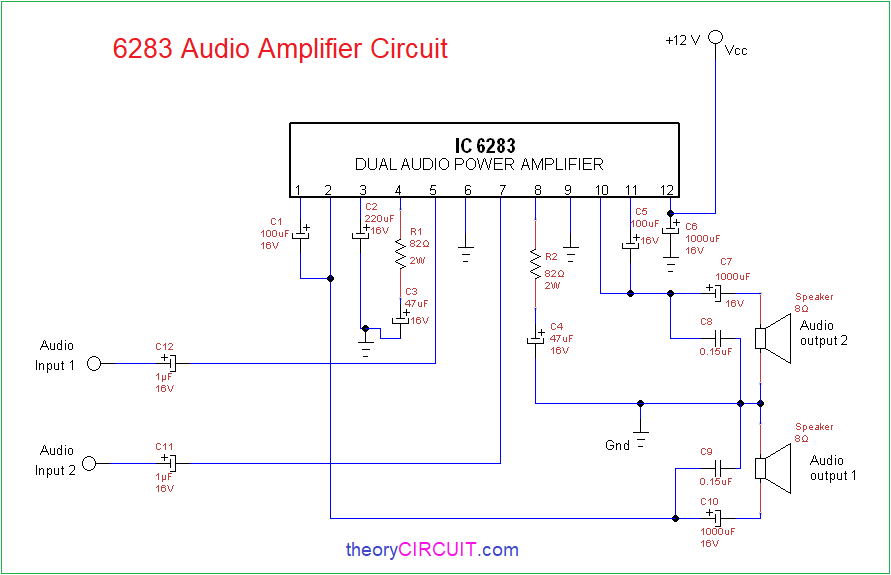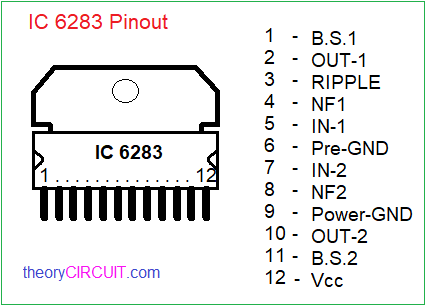Last Updated on March 16, 2024
Simple and Easy to construct Low power Stereo Audio Amplifier circuit designed with single monolithic IC, the 6283 Audio Amplifier Circuit is designed with a audio power IC with built in two channels developed for portable audio devices. This IC comes in SIP (Single Inline Package) and this IC will give 2.5W output for 9 volt Vcc & 4.6W output for 12 Vcc.
This IC has built in Thermal shut down protection, and capable of operating with 6V to 15V power supply. IC 6283 provides 30KΩ input Resistance hence no need for audio pre-amplifier at input.
Circuit Diagram
Construction & Working
This circuit constructed as Stereo power amplifier and biased with 12V Vcc, at input two 1μF capacitors C11 and C12 used as audio coupling capacitors, two 8Ω speaker used at the output.
Here for Channel 1 pin 5 acts as audio input pin and pin 2 acts as audio output pin, for Channel 2 pin 7 acts as audio input and pin 10 acts as audio output pin.
Voltage gain Can be adjusted by changing R1 and R2 Resistors here this circuit designed to give 45dB Voltage gain. Refer data sheet for voltage gain calculation.
IC 6283 Pinout
This IC contains only 12 pins all are arranged in a single inline package, due to its internal circuit design minimum numbers of external components enough to form stereo amplifier.


I have use in 6283 single ic stereo board amplifier.
I am using 4 ohm 8inch speaker( 20 watts ) perfect working.
but we connect 8 ohms 8 inch speaker is not working ( low sound )
what is the reason????
what to do in loud sound
Check the Speaker working conditions, if it’s ok then check the power source Ampere. Its better to use 1A.
An amplifier if gives 10w on 8ohm load so it will give 20w on 4ohm load
will you able to give me a connection diagram if i upload my 6283 circuit and a bluetooth board?
I have 6283 board but it is singal or mono connection I need to convert stereo so give me components information and connection methods
I have 6283 board but it is singal or mono connection I need to convert stereo so give me components information and connection methods
Thanks to all members, very useful and simply explained .Keep it up.